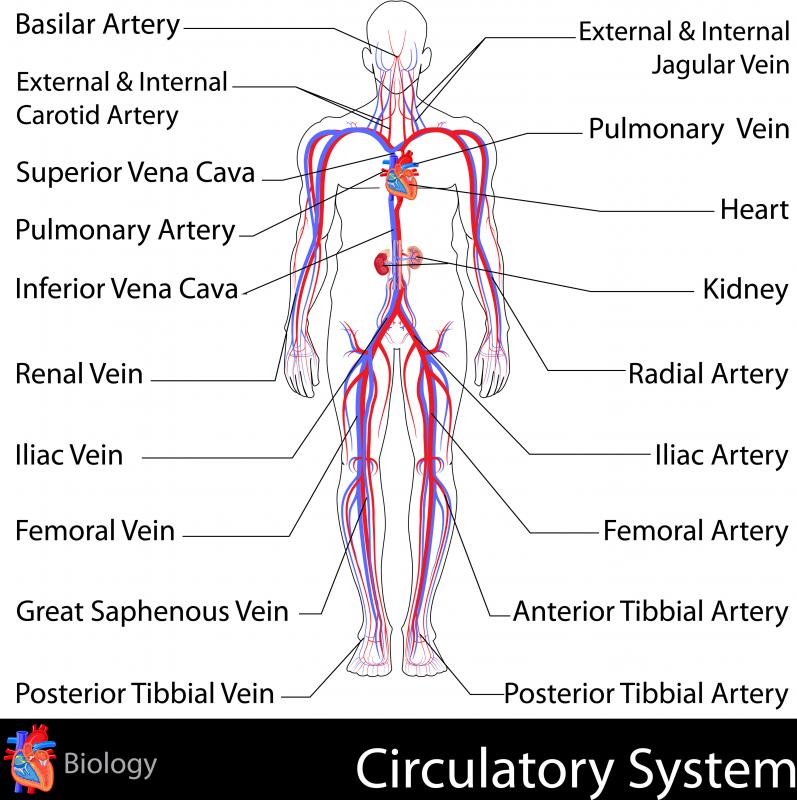At WiseGEEK, we're committed to delivering accurate, trustworthy information. Our expert-authored content is rigorously fact-checked and sourced from credible authorities. Discover how we uphold the highest standards in providing you with reliable knowledge.
What Is the Relationship between the Heart and Respiratory System?
The heart and respiratory system are intricately linked in a number of ways unfamiliar to most people. Their relationship is direct in that the stimulation of one often causes an accompanied stimulation of the other. There are, of course, physiological reasons for these changes, and they are not simply arbitrary actions.
The respiratory system is responsible for the exchange of gases between a person and the environment. These gases may be useful, such as the acquisition of the nutrient oxygen, or negative, like the metabolic by-product carbon dioxide. The respiratory system takes in the good while releasing the bad, acting as a gas-dealing liaison.

These gases, of course, are of no benefit to the body unless they can reach the organs and tissues that need them. This is where the circulatory and respiratory systems overlap, with the heart at the center of circulation. The body does not need a set amount of nutrients as the dynamics of life cause different needs and availabilities that are strongly dependent upon present metabolic conditions. The heart and respiratory system are perpetually dancing to the music played by the body's state changes.

A person running, for example, requires more energy to move than a person at rest. The processes that create the energy to move muscles require oxygen delivery at higher-than-usual rates. In order to accommodate this, the heart and respiratory system need to coordinate an increased action. This involves the heart pumping at a faster rate and an increase in the amount of breaths a person is taking.

One of these increases without the other would simply not be beneficial. If the heart and respiratory system are not in sync, the body cannot receive its desired nutrients. For instance, if the heart were to increase in rate, then a greater amount of blood would reach the organs and tissues. This blood, however, is not useful unless it carries oxygen and other nutrients the body needs, and if the lungs are not accompanying the heart's rate, there are not enough nutrients to meet the heart's desires.

On the other hand, the lungs could bring all of the oxygen they want into themselves. But, unless the heart can pick up and drop off these gases in a similarly ambitious manner, this oxygen will sit uselessly in the lungs. This is the manner in which the heart and respiratory system are uniquely combined to provide a necessary service to the body.
AS FEATURED ON:
AS FEATURED ON:














Discuss this Article
Post your comments